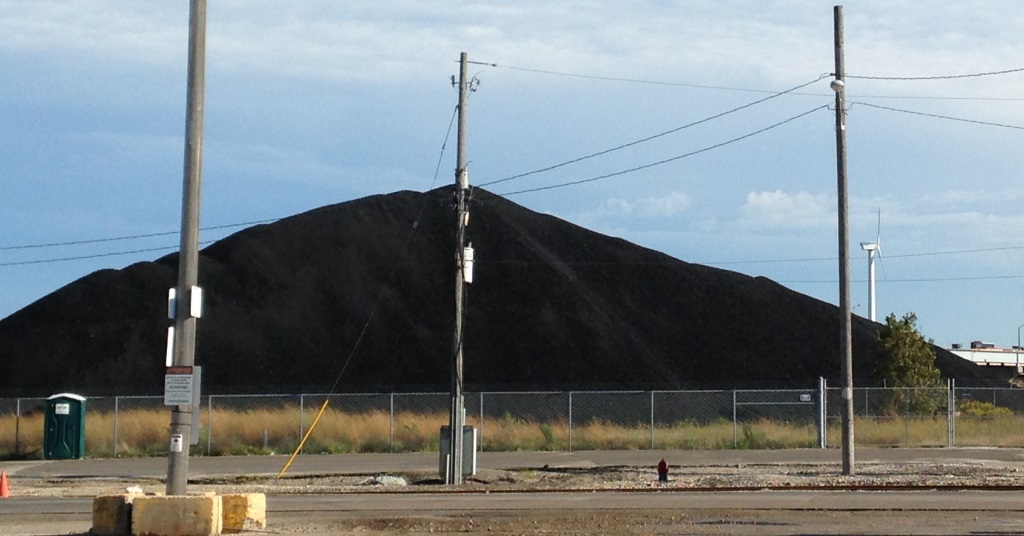The Myth of Clean Coal
Coal causes disease and death. We Energies should switch to clean energy.
“Clean coal” is a phrase we hear again and again. It’s often employed by those in the fossil fuel industry to allay fears that their business is hazardous. The facts say otherwise. The scientific community says otherwise. From mining coal to transporting it to burning it to disposing of its waste, coal is part of a dirty business. And a dangerous one. When air and water are polluted, people sicken, suffer, and die. Only those who make large sums of money from burning fossil fuels cling to this falsehood and continue to spread it.
“Clean coal” is a contradiction in terms, like “vegetarian cannibal” or “healthy cancer.” There’s no such thing as “a little toxic.” Ask anyone who has watched a loved one die from prolonged exposure to dirty air or filthy water. Thousands of miners in West Virginia and Pennsylvania have died–slowly–of “black lung” disease from breathing coal dust. And coal ash–the residue of burned coal–was buried or dumped outright by the truckload into nearby rivers and streams. Not surprisingly, chemicals and elements from coal ash, such as lead, arsenic and mercury, began turning up in people’s drinking water. Coal ash poses the same dangers everywhere.
The hazards of exposure to coal ash have been dramatically demonstrated in a documentary called “Cheshire, Ohio.” Filmed over a ten year period by Eve Morgenstern, it was shown recently at River Bend Nature Center in Racine. Well over 100 people watched in stunned silence as residents told how American Electric Power built one of the largest plants in the world next to their small river town, and then how respiratory illnesses and a variety of cancers began to afflict many people who had no history of these problems. In 2002 American Electric paid twenty million dollars to buy Cheshire, then bulldozed homes, the school, and the church. Soon afterwards, seventy-seven workers filed a lawsuit for exposure to toxic coal dust.
As customers of WE Energies, we deserve a utility that will adapt energy technology in the interests of public health and safety as well as cost efficiency. Sunlight is clean. And free. Wind is clean. And free. And neither will run out, ensuring jobs as long as the sun shines and the wind blows.The true cost of burning coal comes in the toxins and carcinogens released. People who live here should not have to watch their children suffer from asthma, bronchitis or other respiratory illnesses. They should not have to see their parents struggle with Chronic obstructive pulmonary disease (COPD) or dread its arrival in their own later years.
WE Energies can certainly choose to provide energy from clean sources and processes that don’t poison the air, water, and soil. Or it can continue to delay–endangering the well being of all who live in this corner of Wisconsin–and all for the sake of short-term profits. When money trumps the health of families and workers, major changes must be made. The cost of dirty fuel energy is health, plain and simple. No child, parent, friend or neighbor should ever be “collateral damage.” That price must not be paid any longer.
Carl Lindner is a UW-Parkside emeritus professor who lives in Racine.
Op-Ed
-
Wisconsin Candidates Decry Money in Politics, Plan to Raise Tons of It
 Dec 15th, 2025 by Ruth Conniff
Dec 15th, 2025 by Ruth Conniff
-
Trump Left Contraceptives to Rot; Women Pay the Price
 Dec 8th, 2025 by Dr. Shefaali Sharma
Dec 8th, 2025 by Dr. Shefaali Sharma
-
Why the Common Council’s Amended Budget is Good Policy for Milwaukee
 Nov 20th, 2025 by Alds. Marina Dimitrijevic and Russell W. Stamper, II
Nov 20th, 2025 by Alds. Marina Dimitrijevic and Russell W. Stamper, II





















I’m no WE Energies apologist, but this op-ed completely ignores the fact that WE is shutting down a major coal-fired plant in Pleasant Prairie this year and replacing it, at least in part, with a 350 megawatt solar project. This should be seen as a big step forward for WE and SE Wisconsin.
https://www.jsonline.com/story/news/2017/11/28/we-energies-coal-fired-power-plant-pleasant-prairie-shut-down-2018/901891001/
“The scientific community says otherwise.” Best reason for the Walker/Koch cabal to ignore the facts.
clean coal requires an additional 40% more energy to capture, compress, transport, & inject into the ground (often for additional oil or gas extraction)
so, that = 40% more coal burned, of course the King Coal supports it!